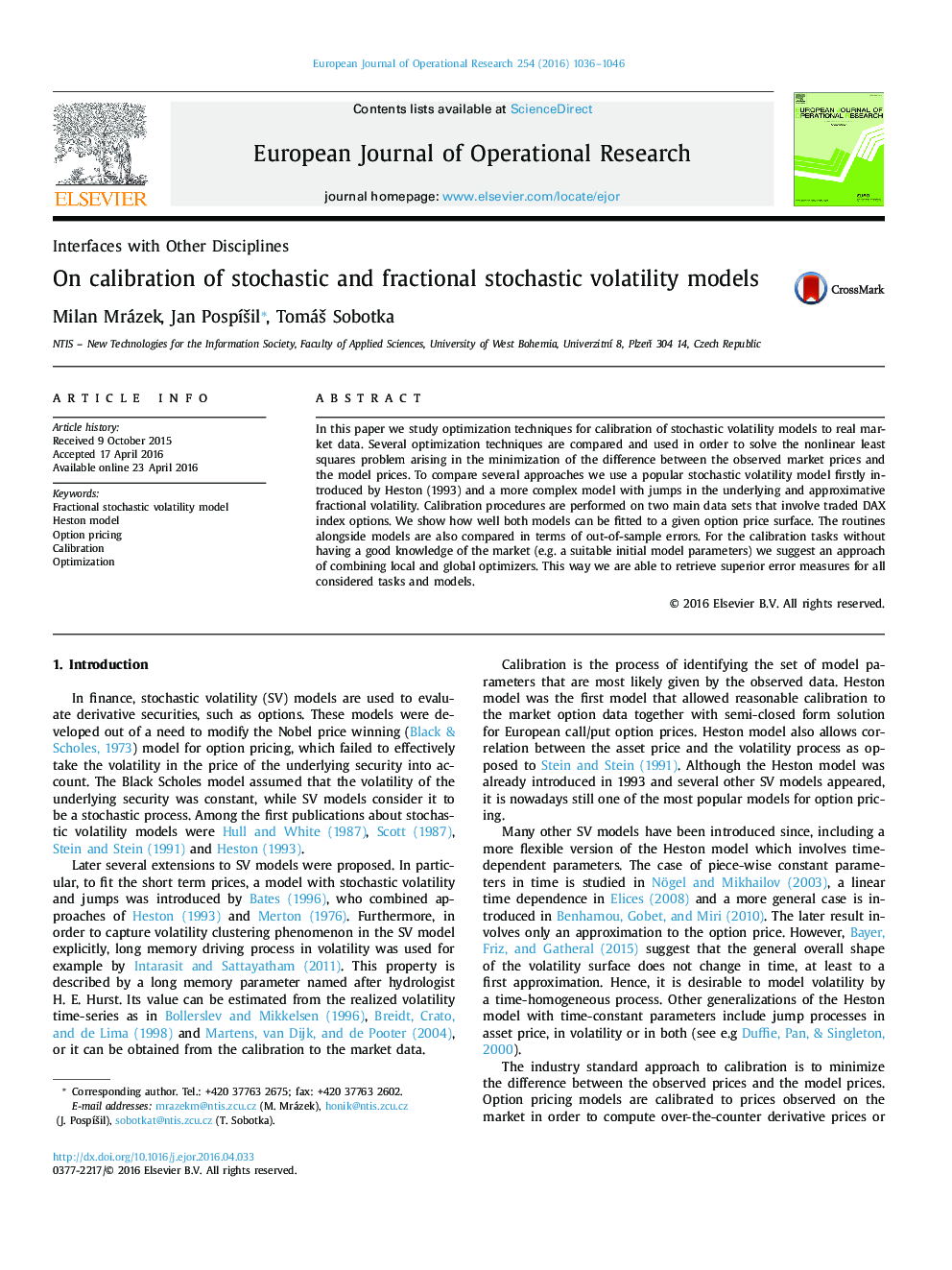| Article ID | Journal | Published Year | Pages | File Type |
|---|---|---|---|---|
| 480527 | European Journal of Operational Research | 2016 | 11 Pages |
•Several optimization procedures are compared on the task of SV model calibration.•Performance of the procedures is tested w.r.t. Heston and FSV models.•Based on the in/out-of-sample results we propose a rule of thumb for calibration.•The FSV model outperformed Heston model with slightly increased computational costs.
In this paper we study optimization techniques for calibration of stochastic volatility models to real market data. Several optimization techniques are compared and used in order to solve the nonlinear least squares problem arising in the minimization of the difference between the observed market prices and the model prices. To compare several approaches we use a popular stochastic volatility model firstly introduced by Heston (1993) and a more complex model with jumps in the underlying and approximative fractional volatility. Calibration procedures are performed on two main data sets that involve traded DAX index options. We show how well both models can be fitted to a given option price surface. The routines alongside models are also compared in terms of out-of-sample errors. For the calibration tasks without having a good knowledge of the market (e.g. a suitable initial model parameters) we suggest an approach of combining local and global optimizers. This way we are able to retrieve superior error measures for all considered tasks and models.
